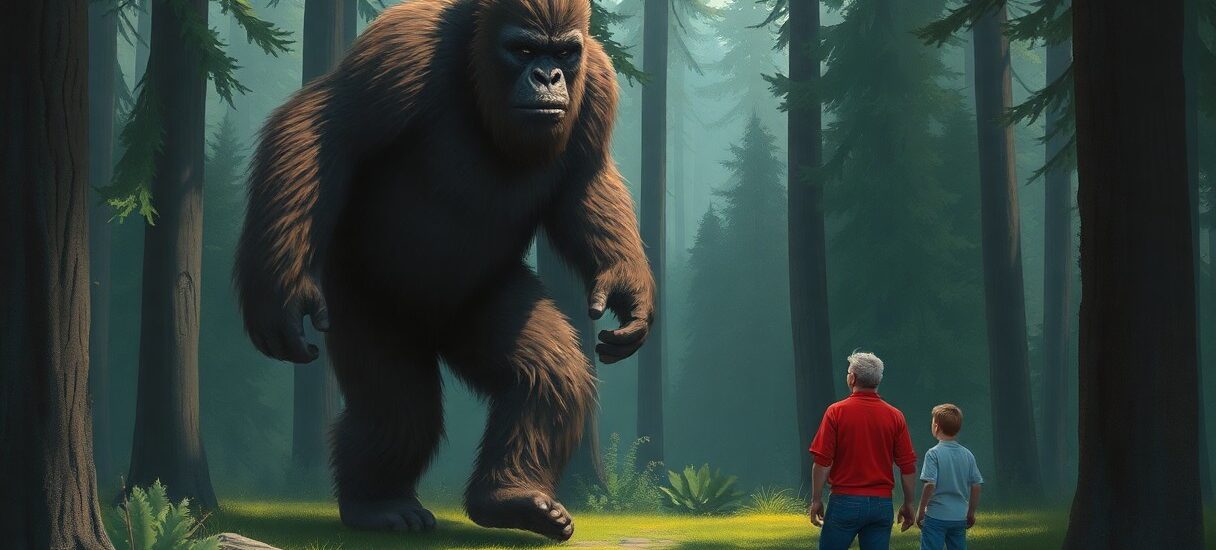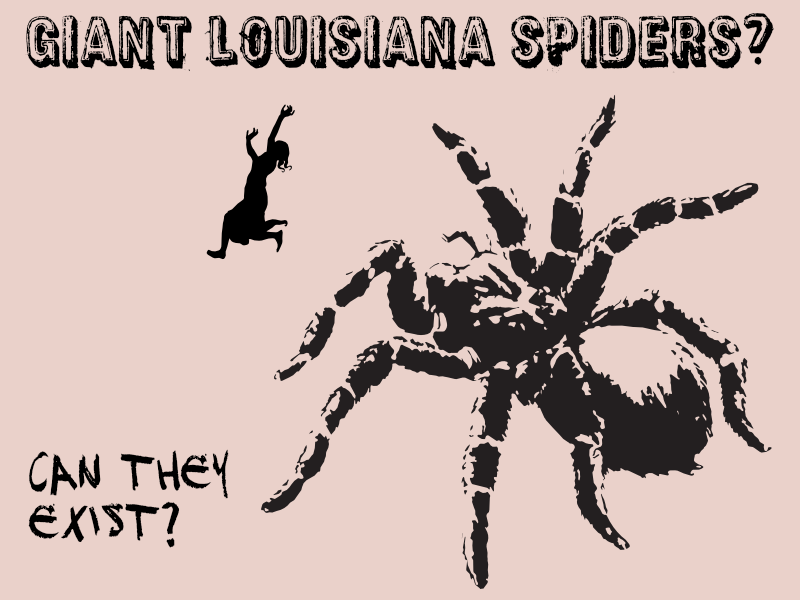Chasing Shadows: The Encounter
You can almost feel the tension as the creature, estimated at nearly six feet tall in its hunched posture, dropped from a tree about 10 feet high and sprinted through dense brush on two legs. The dog almost caught up but the beast surged ahead, disappearing over the railway tracks with astonishing speed. For a brief moment, Edward and his son caught a clear view of its hairy back and distinctive large buttocks, confirming it as no ordinary animal. This fleeting glimpse, lasting less than ten seconds, left no time for photos but etched an indelible image of a primate-like figure fleeing into the wilderness.
Eyewitness Accounts: Credibility and Details
The detailed testimonies from Edward Henry and his son stand out for their consistency and specificity. Both describe a large, dark-furred primate moving bipedally, with visible features like a hairy back and notably large buttocks. Their separate reports to the BFRO coincide on timing, setting, and reactions, lending weight to their credibility. The father’s practical work background and ties to the area, combined with the son’s vivid, spontaneous exclamation, suggest you’re not dealing with fabrications but genuine, startled eyewitnesses.
The Father’s Perspective
Edward Henry recounts hearing rustling high in a tree before a huge thud signaled the creature landing nearby. His dog’s pursuit triggered the primal figure to flee rapidly through dense brush and across train tracks. Henry’s clear assertion that the animal was not a bear but instead a large, gorilla-like primate moving upright adds authority. His calm, methodical description of events and location grounds the experience in real, tangible surroundings you can map and verify.
The Son’s Description
The 12-year-old’s striking quote, “It was as big as a bear but it looked like a gorilla,” captures the surreal impression of the creature’s size and shape in vivid terms. His immediate reaction reflects the shock of a child confronted with something both enormous and unfamiliar. The son’s emphasis on the primate’s upright posture and wild fur supports the father’s account, reinforcing the sighting’s reliability through shared observation.
Digging deeper into the son’s view, you’ll notice how his comment about the creature’s height—suggesting it would have been even taller if not hunched—adds a nuanced layer to the description. This indicates he paid close attention despite the brief encounter, noting subtle behavior details like posture, which aligns well with Bigfoot lore describing a towering, bipedal beast. His perspective enriches the narrative with a raw, visceral sense of awe that complements the father’s steadiness.
The Terrain: Insights into Bigfoot’s Habitat
The marshland and wooded slopes near Plum Creek provide a varied landscape ideal for elusive creatures like the reported Bigfoot. Dense cattails, thick brush, and pockets of hardwood forest supply ample cover and pathways that allow large animals to move unseen. The proximity to water sources like creeks and marsh basins ensures hydration and a variety of plant life, while rail bridges and train tracks add unusual terrain features that might offer escape routes or territorial boundaries. This diverse mix of wetlands and upland forest creates a habitat rich enough to support large, secretive wildlife.
Monroe County’s Ecosystem
Monroe County features a blend of marshes, creeks, forests, and open areas that sustain abundant wildlife year-round. With restrictions on hunting in key areas like the Tamarack Creek marsh, deer populations thrive alongside other mammals and abundant vegetation, creating a balanced ecosystem. Seasonal changes bring varying food sources, and the county’s waterways support fish and amphibians that further enrich the food web. Human development remains mostly distant from these natural pockets, preserving quiet refuges for large mammals that prefer solitude.
Deer Populations and Food Sources
The marsh and surrounding woods hold steady herds of deer that remain protected from hunting, providing a reliable food source that likely attracts a wide range of predators and opportunistic feeders. Dense growths of cattails and other marsh plants supplement the diet of many animals, including those adapted to colder months when prey becomes scarce. The presence of both aquatic and terrestrial vegetation supports a layered food chain, making Monroe County’s marshlands an ideal location to sustain a large, omnivorous creature moving through the underbrush.
Deer numbers in the marsh near Plum Creek can exceed several dozen individuals, especially since hunting restrictions maintain steady populations. This abundance ensures year-round availability for predators and scavengers. Cattails, which grow thick along water edges, offer not only nourishment but also shelter for smaller animals, contributing to a rich environment. Additionally, the diverse terrain with wooded slopes and open wetlands creates seasonal feeding grounds abundant with nuts, berries, and small mammals, allowing any large omnivore to access a varied and sustainable diet throughout the year.
Investigating the Evidence: What the Experts Say
The BFRO’s careful interview with Edward Henry and his son stands out for its attention to detail, adding weight to the sighting’s credibility. The swift, clear descriptions of the creature’s size, movement, and physical features, alongside environmental context, reinforce this report’s significance. You’ll notice that the investigators emphasize the quickness of the encounter while highlighting specific traits that differentiate this from common wildlife like bears or deer. This blend of descriptive testimony and local knowledge provides a strong foundation for further analysis.
The BFRO’s Findings
BFRO Investigator Matthew Moneymaker confirmed the credibility of both Henry and his son, noting their consistent accounts when interviewed separately. Their detailed observations—such as the creature leaping from a tree roughly 10 feet high, its bipedal, hunched movement ascending an embankment, and the unmistakable fur-covered back—aligned with classic Bigfoot descriptions, ruling out more mundane possibilities like bears. These factors, paired with local ecological conditions, led the BFRO to label the sighting as “credible” and worthy of ongoing attention.
Analyzing Creature Behavior
The rapid movement of the creature fleeing on two legs, combined with its apparent avoidance of confrontation, matches typical Bigfoot behavior reported by other witnesses. You’ll find that the animal’s ability to dodge a pursuing dog and disappear quickly through dense brush demonstrates significant strength and agility. Its decision to crouch before moving and avoid facing the humans directly hints at a cautious, possibly intelligent response rather than random animal panic.
Observing how the creature reacted under pressure gives you insight into its probable instinctual patterns. The sudden leap from a 10-foot tree and immediate crouched approach prior to flight suggest it was aware of its surroundings and potential threat. You can imagine this as a strategic move to quickly assess and then evade. Such behavior mirrors other well-documented Bigfoot encounters where elusiveness and two-legged sprints into thick foliage are common. It also supports the idea that this creature is not merely a large animal reacting blindly but one with a level of adaptive caution, reinforcing long-standing reports of Bigfoot intelligence and territorial awareness.
Cultural Context: Bigfoot in Folklore and History
You’ll find Bigfoot stories woven deeply into the fabric of North American culture, with eyewitness accounts dating back more than 400 years. These large, hairy humanoids have captured imaginations through generations, fueling a mix of folklore, skepticism, and scientific curiosity. The persistence of these tales reflects not only the mystery of remote wilderness areas but also humanity’s enduring fascination with creatures that lurk just beyond the edge of the known world.
Indigenous Narratives and Sightings
Indigenous peoples across North America have long shared accounts of wild, non-human beings inhabiting forests and mountains. Often depicted as elusive, intelligent “wild men” or forest spirits, these figures appear in stories from the Pacific Northwest to the Great Lakes. Their traits bear striking similarity to modern Bigfoot descriptions, suggesting a layer of cultural continuity that you can trace back centuries, emphasizing the creature’s place in traditional lore beyond mere legend.
The Evolution of Bigfoot Sightings in America
Bigfoot sightings transitioned from scattered indigenous tales to widespread public interest in the mid-20th century, sparked notably by the famous 1967 Patterson-Gimlin film in California. Since then, thousands of reports have flooded organizations like the BFRO, which catalog and investigate these encounters. The creature’s image evolved alongside popular culture, growing from vague “hairy giants” into the iconic, ape-like giants you recognize today.
The Patterson-Gimlin encounter marked a turning point, giving Bigfoot a visual identity that shaped subsequent reports and media coverage. Throughout the 1970s and beyond, sightings surged nationwide, with evidence often limited to large footprints, fleeting glimpses, and anecdotal accounts like Edward Henry’s recent experience in Michigan. This evolving narrative reflects both increasing public fascination and the challenges of verifying phenomena in dense wilderness, illustrating how Bigfoot remains an enigmatic figure straddling the line between myth and possible reality.
Internet Response: Skepticism and Belief
The sighting sparked a wave of contrasting reactions online, with some users quickly dismissing the story as far-fetched while others embraced it as another piece of the Bigfoot puzzle. You’ll find skeptics highlighting the lack of photographic evidence and the quickness of the encounter, while believers point to the credibility of the witnesses and the detailed description reported to the BFRO. This division reflects a longstanding tension in Bigfoot discussions, where personal experience and scientific demand often collide in the court of public opinion.
Social Media Reactions to the Sighting
On social media, the sighting became a hot topic for both jokes and genuine discussions. Comments ranged from sarcastic quips like, “No way Bigfoot’s hiding in Monroe,” to playful nods about local legends including Elvis sightings. Still, some users shared personal or historical Bigfoot anecdotes tied to the Downriver area, expressing optimism about potential cryptid activity. This mix of humor, skepticism, and belief highlights how Bigfoot sightings continue to capture the imagination—even if the truth remains elusive.
The Ongoing Debate
The debate over Bigfoot’s existence shows no signs of abating, as fresh sightings like this one add fuel to the fire. You’ll find that despite decades of searches and footprint castings, hard evidence remains elusive, keeping the mystery alive. Meanwhile, organizations like the BFRO continue collecting detailed reports from credible witnesses, asserting that patterns in these accounts suggest something unexplained roams North American forests. Whether you lean toward belief or doubt, the discussion reflects deep-rooted cultural fascination with the unknown.
More than just passing tales, the ongoing debate intertwines folklore, eyewitness testimony, and scientific inquiry. Native American and First Nation oral histories contribute longstanding narratives of wild, hairy “people,” which many feel align with modern Bigfoot descriptions. The BFRO’s systematic investigation of over seventy years of reports, alongside continuous discoveries of extensive footprints, attempts to bridge anecdote with evidence. Yet the elusive nature of the creature and the absence of concrete proof mean skepticism remains alive, ensuring the dialogue will persist as new encounters emerge.
To wrap up
Upon reflecting on the report of a “credible” Bigfoot sighting involving a 6-foot tall, hairy creature fleeing from a father and son, you gain insight into a mysterious encounter that continues to intrigue both locals and researchers. The detailed observations, including the creature’s upright movement and distinctive features, provide compelling reasons for you to consider the possibility of unknown wildlife in familiar woods. While skepticism remains, your awareness of such accounts invites a broader understanding of unexplained phenomena reported across North America.
To give some credit to skeptics, Matt Moneymaker of Finding Bigfoot fame has never really met a story he didn’t believe. He seems to buy almost any Sasquatch story that is told to him, from watching his old Discovery series.
The other thing is that usually dogs are frightened of Bigfoot and run the other way.
Perhaps this was an escaped chimp of some sort? Maybe it was a juvenile Sasquatch that wasn’t large enough to be immediately intimidating.
What do YOU think?









